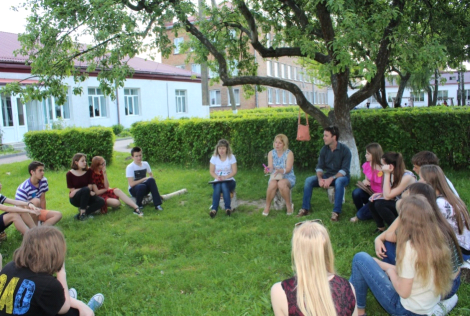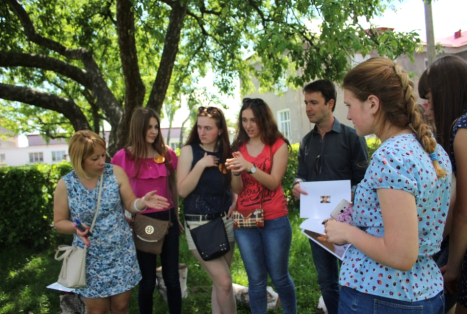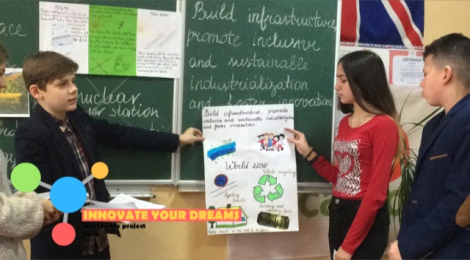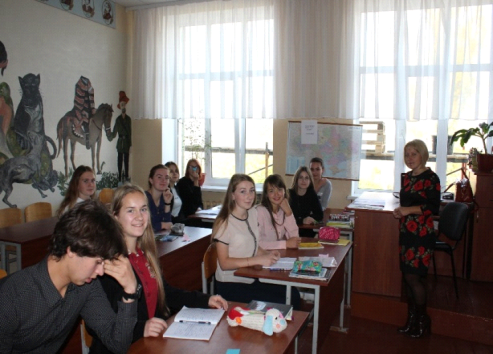Tips to make effective lesson
Activities to develop 21st century skills
 1.Use different lead–ins, e. g. “A man came to the hotel on Friday. He spent three days here and went on Friday. How can it be?” or “ Five pieces of coat carrot and a scarf are on the ground . None put them here. How are they here?”
1.Use different lead–ins, e. g. “A man came to the hotel on Friday. He spent three days here and went on Friday. How can it be?” or “ Five pieces of coat carrot and a scarf are on the ground . None put them here. How are they here?”
2. Use creative questions to promote thinking skills, e.g. “What type of music makes you feel happy and why?”
3.Give the students a controversial idea , ask them to analyze it and join one of the groups “ for”, “against” or “not sure”. Ask to express their point of view.
4. A problem solving. Your groups crashed landed on an island in the middle of the Atlantic Ocean. You need to survive on the island indefinitely unless you can make a light, which would be seen from passing planes or a boat, from the raw materials on the island. Work together and come up with some solutions. State what you will do and why.
5. Hypothesis game. Read the evidence and offer a possible explanation of what happened in this house or make up some questions to gather more information.
- there were huge footprints on the kitchen floor
-the dog was barking in the yard
-there were some brown spots on the front door
6. Sell an imaginary product. Your group members are salespeople. Sale self- cleaning plates or talking mirrors.
7. Rewrite a story. Take a traditional story that everyone knows. Retell the story in the present days or in your country. Change some events or characters.
8. Controversy. Discuss the following statements. Do you agree or disagree. Why?
- anyone should be able to fly.
9. Make two predictions about any topic, one positive one negative. Explain your predictions.
10. Act out the invention of the dynamite.
11.“Ph4k” (“Philosophy for kids”). Put five different ideas on the floor. Ask students to stand near the idea they like most. Choose one which is the most popular and discuss it with the students.
12.Six thinking hats. Six hats of different colors evaluate the same idea from different points of view.
13.Give a picture. It should be a bit unusual. Ask “ What is going on in the picture?”. Then adding new facts or ideas , make the learners think critically and elicit more information.
14. Problem solving. Draw three things but not a boat or a plane. Give your student the following situation: “You are at the deserted island. With the help of these three things you can get home. How will you do it? Why have you drawn these things?”. ( You may give different situations and questions).
15.Ask tricky questions e. g. “Would you rather be a bird or a fish? Why?”, “What would you do if you were invisible? Why?”.
 16. PBL is the best way to promote the 21st century skills. At PBL learners collaborate, create communicate and think critically.
16. PBL is the best way to promote the 21st century skills. At PBL learners collaborate, create communicate and think critically.
17.Listen to the song . Make a story using the plot of the song. Role play your story.
18. "Save polar bear". Organize your students in groups. Mother bear is on the island, to get to it and to save it you ask your students questions, they discuss in groups and answer. For each correct answer they get one step.
19. Investigate a detective story. The students have parts of the characters of the detective story. They ask questions, analyze, investigate and find out who commited the crime.

20. Listen to the description of the a day in the life of the botanical garden. Write down all the plants names that you hear.
22. Work in pairs. Read the situation below. Discuss what the reasons for each situation could be.
- a man walks into a cafe and asks for a glass of water. The waiter pulls out the gun and points it at the man The man says " Thank you" and leaves the cafe.
- a woman has two sons. Both were born at the same hour on the same day in the same year, yet they are not twins.
23.Promoting Creative Writing
In this activity, students were divided into two groups. Both groups had to sit in a semicircle and were given a sheet of paper that said: "It was dark and stormy." Then, students in both groups had three minutes to write a story and then hand it to their partners to continue writing about the same subject and complete the story. The group who had the best story with the best grammar and content would get points.
Both groups allowed their creativity to fly and imagine what it was like to write their stories in groups, creating their own world of fiction.
24.Sharing a Speech
I would also suggest writing and sharing a speech about any topic students want to share. In this strategy, for a speech, students could use whatever they wanted to say. Students are given 20 minutes to write their speech. Theyare free to use their own knowledge or what was easy for them. They chose interesting speeches such as personal information about their lives, family, love life, problems, favorite movie, their best or worst experience, and so forth.
With this activity, teachers get the chance not only to see students' limitations language-wise, but they get to know what the students are like, building rapport with and among them.
24.Circles of Life
In order to listen to what students have to say and share I propose a very interesting activity that enabled me to get excellent results. I ask students to draw three big circles. In the circles, they write about the most significant aspect of their lives. For example in Circle 1, they write the most meaningful number for them; in Circle 2, the object they could not live without; in Circle 3, the most important name for them.
Students are told to stand up and walk around the classroom sharing every circle with the other students. Student A shares with his classmates that 2 is his most significant number because he has two sisters and so on.
Students interact with one another, listening to what the other has to say.
25.Drawing and Speaking
I used another student activity that was new to this specific group. In order to practice speaking, I asked students to draw something they wanted to share. They had to draw it on the board and explain why it was drawn. After that, another student would come up and draw another object or person next to it. After all the participants drew their objects, they would have to create a story based on the drawings on the board.
Students had the opportunity to share their stories with others and evaluate their own process with peer feedback.
26.Students' Autonomy in Creating Their Own Activities
The best technique, in my opinion, to win students over is certainly to let them do their own activities. After I proposed many of the activities I did, I thought perhaps they could just do the same. I told them to get into groups and prepare their own fun and fruitful activities for their peers.
27.Find a Connection
Bring a bag of random items to your class or draw up two lists of unrelated items on the board – get your students to throw you some ideas. In pairs or small groups students select two or more items and explore different ways they can be connected. The results can be absurd, but the process is invaluable. From a language point of view feed in the structures we use for classic associations of for example, similarity and contrast.
28. Zero Draft
The Zero Draft is a technique often used by writers.
Put the topic where everyone can see it. Each student draws up a table with two columns.First column: they write down everything they currently know about the subject.Second column: they write down what they need or want to know about the subject, but don’t currently know.Next stage: pair up and see if you can answer the areas your partner doesn’t know.Move on into small groups and then whole class feedback. This is a way to harness the prior knowledge students bring to your classroom.
29. Pink Fluffy Unicorns Dancing on Rainbows
Sometimes thinking crazy brings out ideas that are, with a tweak or two, actually plausible. Possibly not the unicorns…but interesting nonetheless.
Post/state the problem
Get your students to dream up the most extreme and impractical solutions they can think of to the problem, or an ideal world solution.
Focusing on a selection of crazy ideas, consider and discuss the ideas in detail (pairs and small groups). The objective is to generate more realistic ideas.
30.Try the Brainwrite.
Get your students to write down a few rough ideas for solving a particular problem.
Each piece of paper is then passed on to someone else, who reads it silently and adds their own ideas to the page then they pass the page on.
Repeat until everyone or a least a few has had a chance to add. The notes can then be gathered, ready for discussion.
Games to develop 4Cs
Games and fun activities are a vital part of teaching. Whether you’re teaching adults or children, games will liven up your lesson and ensure that your students will leave the classroom wanting more.
Games can be used to warm up the class before your lesson begins, during the lesson to give students a break when you’re tackling a tough subject, or at the end of class when you have a few minutes left to kill. There are literally hundreds, probably thousands, of games that you can play with your students. EFL games are used to test vocabulary, practice conversing, learn tenses - the list is endless.
Games promote collaboration, creativity, communication and critical thinking. There are different games. Some offer practice with vocabulary, grammatical patterns, interaction skills in a low-stressed environment. Games offer students many benefits, including opportunity to develop social skills. There are some basic guidelines to keep in mind when using the games in your class. It is important to ensure that the level of the game is appropriate for your students, that all players understand the procedure of playing. It is important that students see that the purpose of the game is to collaborate and communicate using TL( target language). I offer some games which I like and use most of all at the lessons.
Game 1 : Picture This
The basic Picture This game uses the Picture This cards ( cards with pictures and questions) as the starting point for conversation among students based on a question-and-answer format. As with all Picture This games


про публікацію авторської розробки
Додати розробку
